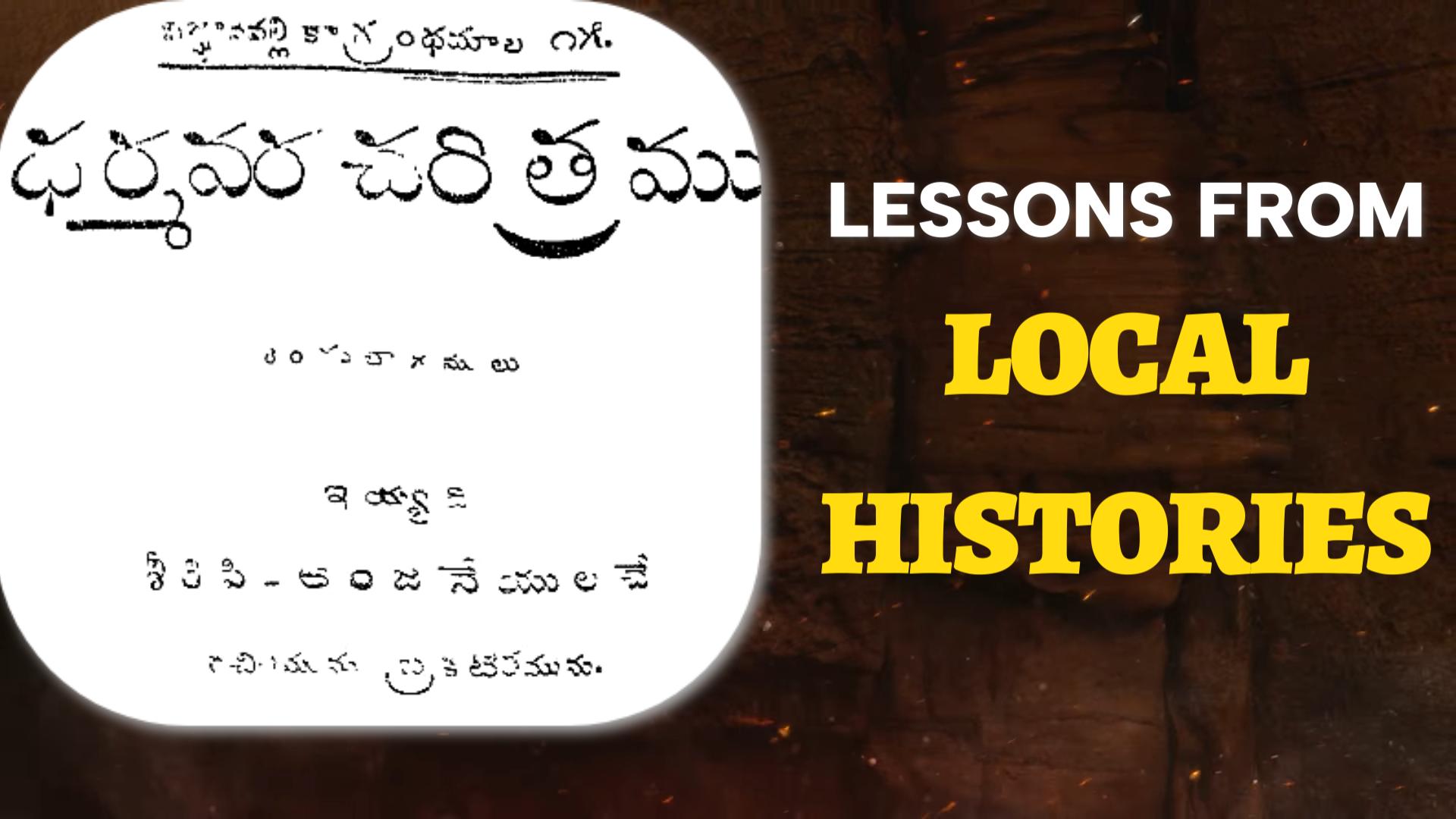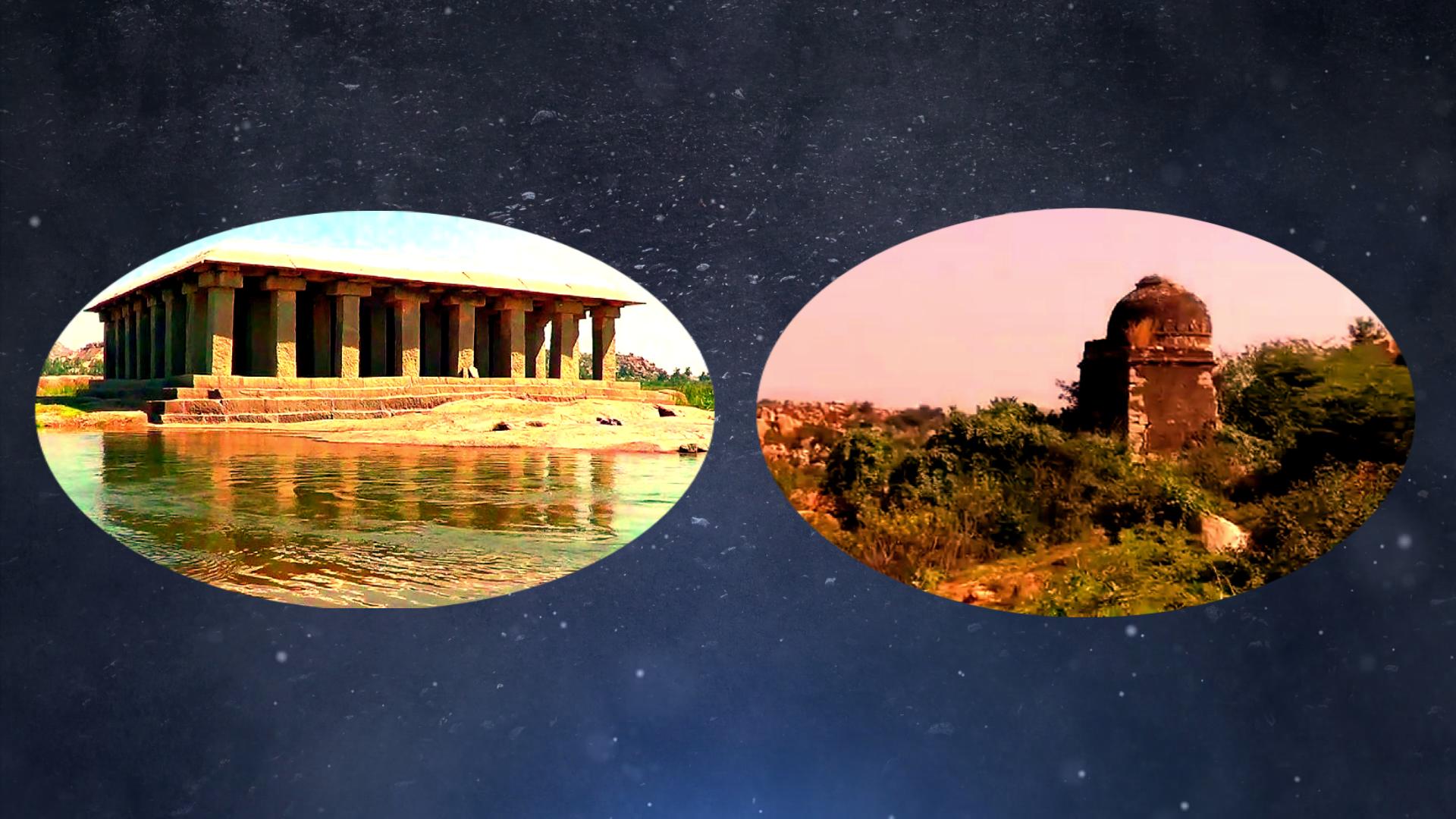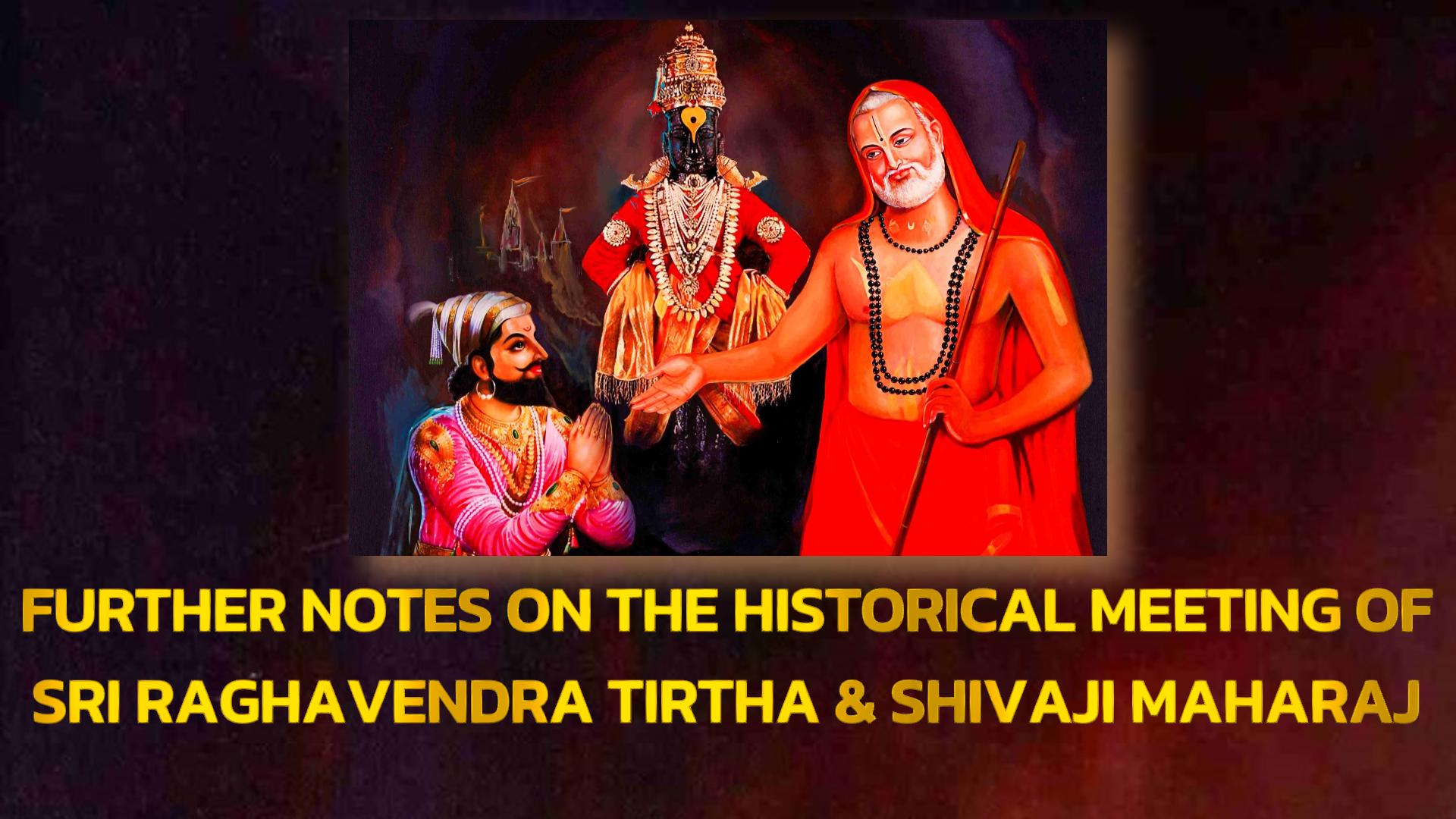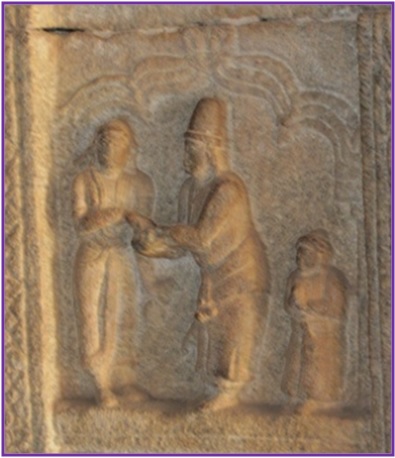Recently, an audio clip that contained a legend associated with a popular polemical work titled Advaita Siddhi written by Madhusudana Saraswati from Sankara’s Advaita School gone viral. This Advaita Siddhi is a rebuttal of Vyasatirtha’s Nyanamruta.
Here is a translation (not verbatim but the essence of the speech).
“Madhusudana Saraswati was an erudite Advaita scholar. He wrote ‘Advaita Siddhi’ in which he criticized Vyasatirtha’s ‘Nyayamruta.’ This rebuttal created a challenge [to Dvaitins] as to who should write the rebuttal [from Dvaita standpoint]. By this time, Vyasaraja had become quite old. He was unable to read the book as eye lids were closing due to ripen age. He said to his disciples that I can’t write the rebuttal due to age factor and suggests them to approach Raghuttama Tirtha of Uttaradi Matha. Disciples reach out to Raghuttamaru who immediately accepts the invitation. He [Raghuttama T.] says that if such a work is done by a disciple it yields eight fold virtues. Thus Vyasa Ramacharya and Ananda Bhattaraka wrote two books i.e. Tarangini & Nyayamruta Kantakoddhara respectively). These are considered as great works. They [Vyasa Ramacharya & Ananda Bhattaraka] went to Madhusudana Saraswati to learn about Advaita Siddhi book. In the mornings, [they] will learn about the Advaita Siddhi and in the nights, [they] write the rebuttals. On the day of mangala of Advaita Siddhi, [they] handed over their rebuttals as Guru Dakshina. Madhusudana Saraswati threw them into a river but [they] had copies of their books which [they] offered to Raghuttama Tirtha.”
There were some strong reactions from various quarters and the same has met with its destined fate i.e. personal abuse and apathy.
As I am not interested in persons but the content and context, my present write-up is aimed at the exploration of the historical antecedents of the people mentioned in the above narration.
PERSONS & TIMELINES
Firstly, let me put up the timelines of the persons mentioned in the speech.
TABLE OF TIMELINES
|
Name |
Timeline |
Remarks |
|
Vyasatirtha |
c.1446 – 1539 c.1447 – 1539 c.1460 – 1539
|
As per B. Venkoba Rao As per Raja S. Gururajacharya (in Kaliyuga Kalpataru) As per Dr. BNK. |
|
Raghuttama Tirtha |
c.1549-1596 |
Original year of birth is unknown. c.1549 has been considered as YoB based on the legend that Raghuttama T. has been initiated into Sanyasa at young age (brahmacharyashrama) |
|
Madhusudana Saraswati |
Version 1: c.1490-1580 Version 2: c.1540-1600 Version 3: c.1540-1647 Version 4: c.1540-1640 |
Version 1: P.M. Modi Version 2: Dr. BNK Sharma Version 3: Karmarkar Version 4: Wikipedia |
|
Ananda Bhattaraka |
c.1535-1605 |
Sishya of Raghuttama T. & father of Vidyadhisha Tirtha. |
|
Vyasa Ramacharya |
c.1550-1620 |
Sishya of Raghuttama T. |
The above table with various timelines proposed for Vyasatirtha & MS we can understand that though the Year of Birth of Vyasatirtha slightly differed, the year of Brindavana pravesha remained same i.e. c.1539. Whereas both the YoB & YoD of MS varied from author to author and the difference is nearly 50-60 years. Thus the timeline of MS is of chaotic confusion.
DIFFICULTIES IN DECIDING MADHUSUDANA’S TIMELINE:
As I have shown in the remarks column of Timelines Table, the exact period of MS is still not known. There are different versions available and each propounder cites some or other evidences that feebly support his/her argument. Nevertheless, I have considered 3 timelines for the present discussion and tried to zero-in on one of them.
To begin with, let us understand that, within the Advaita community there are differences of opinions on the accuracy of Madhusudhana Saraswati (MS)’ life history. They are still debating on the hagiography of MS.
Following link is a glimpse of one such debate:
http://lists.advaita-vedanta.org/archives/advaita-l/2012-January/030505.html
From the discussion listed in the above link we can understand that the timelines and personal details of MS are not as verifiable as Vyasatirtha.
But to arrive at a conclusion, I have used three works i.e. Introduction to Vedanta Kalpalatika by R.D. Karmarkar (Published in 1962 by BORI), Introduction to Siddhantabindu by P.M. Modi & History of the Dvaita School of Vedanta by the renowned Madhva historian Dr. B.N.K. Sharma.
First let me begin with the observations made by Dr. P.M. Modi in his introduction to MS’s Siddhantabindu. He offers a timeline between c.1490-1580 for MS:

R.D. Karmarkar on the life history of M. Saraswati, he gives another period that differs from P.M. Modi’s by 50 years. Here is what Karmarkar said:

Karmakar also tries to provide the list of MS’s contemporaries from Northern India. Read the following paragraph:

As we now know the contemporaries of MS, let me list out the timelines of them with an idea of estimating the probable period during which MS flourished.
|
Tulasidas |
1532-1623 |
|
Akbar |
1542-1605 |
|
Gadadhara Bhatta |
Flourished during 17th cent. |
With the above information, we can deduce that MS must have flourished more or less during the same periods as that of three contemporaries.
P.M. Modi who brought MS’s birth year to c.1490, also informs that MS did meet with Mughal emperor Akbar (born in c.1542) to complain about the killing of Hindu Sanyasins by Muslim Fakirs in and around Varanasi:

As we can see from the above that, Modi picked up this narration from Prof. J.N. Farqunhar, a Christian missionary based at Calcutta who did some research on Mughals. Hereunder is the complete paragraph from Farqunhar’s article on MS’s meeting with Akbar.

Thus, we can finally infer from Modi’s & Karmakar’s inputs that MS did flourish during 16th century i.e. c.1500 onwards to his demise (in c.1580 or c.1600).
Now, let us look into what Dr. BNK Sharma had to say about MS. In his HDSV, Dr. BNK wrote an exclusive chapter i.e. Chapter XXX – Dialectic Sequel To the Nyayamruta and here he mentions the timeline of MS as between c.1540-1600.

Thus, the timelines proposed by Karmarkar & BNK (though they differ on the year of demise) affirm that the year of birth of MS is c.1540 whereas P.M. Modi proposed c.1490 as MS’s year of birth.
From the above paragraph from BNK, we can see that there were two more timelines given to MS i.e. (a) Chinnasvami Sastri’s c.1575-1640 and (b) Kuppusvami Sastri’s c.1625-1700.
As I don’t know the veracity of Chinnasvami & Kuppusvami, I have omitted their periods from my study and limited my exploration to the periods proposed by Modi, Karmarkar & BNK.
SIMULATIONS OF 3 TIME PERIODS & THE NEGATION OF DISPUTED STORY:
Having seen the conflicting years of MS’s birth & death, let me present simulations that would help us to know whether the disputed narrative that triggered the debate on Vyasatirtha & Madhusudana Sarswati can stand its ground.
SIMULATION 1: If we go by Modi, then we can see that MS was a contemporary to Vyasatirtha up to c.1539 (by which year he was nearly 49 years old having born in c.1490) and Raghuttama Tirtha up to his demise c.1580 (by which year MS was 90 years old).
By this measure, MS also becomes an older contemporary to Ananda Bhattaraka (c.1535-1605) & Vyasa Ramacharya (c.1550-1620). In other words, MS lived for 45 years after the birth of Ananda Bhattaraka and similarly for 30 years in case of Vyasa Ramacharya.
This simulation negates the very substance of the disputed narrative that all the personalities i.e. Vyasatirtha, MS, RT, AB & VR were contemporaries at a certain portion of the timelines. This is for a simple reason that except MS, other three i.e. Raghuttama T., Ananda B., & Vyasa R. were born well after Vyasatirtha’s brindavana pravesha.
SIMULATION – 2:
If we consider Karmakar’s proposal, we see that MS is not a contemporary of Vyasatirtha as the former was born a year after Vyasatirtha’s brindavana pravesha i.e. in the year c.1540. But he (MS) was and to an extent contemporary to other three personalities i.e. RT, AB & VR during the whole of 2nd part of 16th century.
In fact, Vyasa Ramacharya was the most youngest among all the persons narrated in the disputed story but as Karmarkar gave c.1647 as the year of death, MS even outlived the youngest of the trio i.e. VR who’s demised is placed in the year c.1620.
Thus, the disputed story loses its ground on this simulation for a simple fact that MS was born a year after the disappearance of Vyasatirtha from this mortal world.
SIMULATION – 3:
If we travel along with BNK’s timelines, we will reach the same conclusion as that of SIMULATION – 2 as BNK too holds c.1540 as the year of birth for MS. The only amendment that we have to make is that MS passed away in c.1600 i.e. ten years after the brindavana pravesha of Raghutta T.
Thus, the disputed story again doesn’t make sense as this 3rd simulation also tells that MS was born a year later to Vyasatirtha’s brindavana pravesha in c.1539.
CONCLUSION ON THE COMTEMPORARY:
SIMULATION 1, 2 & 3 helps us to conclude that Vyasatirtha was never a contemporary to Raghuttama T., Ananda Bhattaraka and Vyasa Ramacharya.
SIMULATION 1 draws the conclusion that Madhusudana Saraswati could have been a contemporary to Vyasatirtha and Raghuttama Tirtha as he was much younger than the former and much older than the latter. It also hints that both Ananda Bhattaraka and Vyasa Ramacharya too were the younger contemporaries of MS.
SIMULATION 2 draws a conclusion that MS was a contemporary to RT, AB & VR only.
SIMULATION 3 too draws the same conclusion as that of SIMULATION 2.
Based on the above facts, I personally conclude that MS must have been a contemporary of RT, AB & VR only and I wish to stand by Karmarkar & BNK’s timelines i.e. c.1540-1600/1647.
Thus ends the veracity of the disputed story but I have got more to tell to the warring factions!
INTERESTING INFORMATION ON MADHUSUDANA SARASWATI:
Let us take this opportunity to look deeper into Madhusudana Saraswati’s life through his works and as described by the authors who wrote on him. And then try to trace them back to the ‘disputed story’ only to segregate the grain from the chaff.
Take a look at this article published on Kanchi Kamakoti Peetham’s official website:

The author of this article talks about the ‘deep veneration’ of MS towards Srikrishna. He also says that the “Neelachalanaatha” eulogized by MS in one of his books could be either Guruvayurappa or Udupi Krishna. This is in contrast with the earlier observation that Puri Jagannatha was the “Neelachalanaatha.”
Later in the article, the Kamkoti author gives quite an interesting if not astonishing account of MS being at Udupi on a specific mission:

According to Kamakoti Peetham’s author, MS ‘might’ have taken pains to ‘go to Udupi’ to learn Dvaita only to make counter-attacks on it. From this, I feel that this narrative from a prominent Advaita Matha is standing in contrast to the incident of AB & VR going to MS to study ‘Advaithasiddhi.’
Whose narrative is the ‘mirror image’ of whose story?
But is the claim of Kamakoti author that MS is an ardent devotee of Bala Krishna & got influenced by Bhakti is valid? Let us see the truth from Modi’s introduction on MS:

Thus, MS was indeed a great devotee of Lord Krishna and held Bhagavata & Bhagavadgita on the highest pedestal. This deep veneration caused him to defer or detour from Sankara’s Advaita teachings. These literary evidences affirm that MS did get exposed to Dvaita or Bheda Siddhanta. Hence, it can be asserted that MS must have come into contact with Dvaitins if he hailed from South India or got influenced by the teachings of Chaitanya if he was born in Bengal.
P.M. Modi informs that MS venerated Radha along with Krishna thus implying that he was influenced more by Chaitanya’s bhEdAbhEda than Acharya Madhva’s Dvaita.
Hence, it can be deduced that MS was born in Bengal and had exposure to Chaitanya’s philosophy which has influences of Dvaita. This being the case, I am doubtful of the stories that MS infiltrated Dvaitins at Udupi or Ananda Bhattaraka and Vyasa Ramacharya sneaked into MS’s camp!
All said and done, there should not be any doubt that Vyasatirtha was quite senior to all other personalities involved in the ‘disputed story’ and if at all any one of them has to be his contemporary then it is MS only. On the other hand there are evidences to show that MS did live in the period of RT, AB & VR.
Also, there should not be an iota of doubt about AB & VR being sishyas of Raghuttama Tirtha and their respective rebuttals have been considered as the best in their class.
A HUMBLE APPEAL:
I end this article at this juncture with a final conclusion that our (Hindu) society is not in need of any ‘war of wards’ (ವಾಕ್ಸಮರ) but badly needs unity.
Let us not forget that the author of Vyasatirtha’s biography was not a Dvaitin but a Smarta (Advaita) Brahman. Also, let us remember that Raghuttama Tirtha, Ananda Bhattaraka & Vyasa Ramacharya didn’t consider ‘Matha-based’ prejudice while taking up the challenge of rebutting Advaitasiddhi.
Aren’t these the fine morals that we must adopt, adepth with & follow in true spirit?
@@@@@




